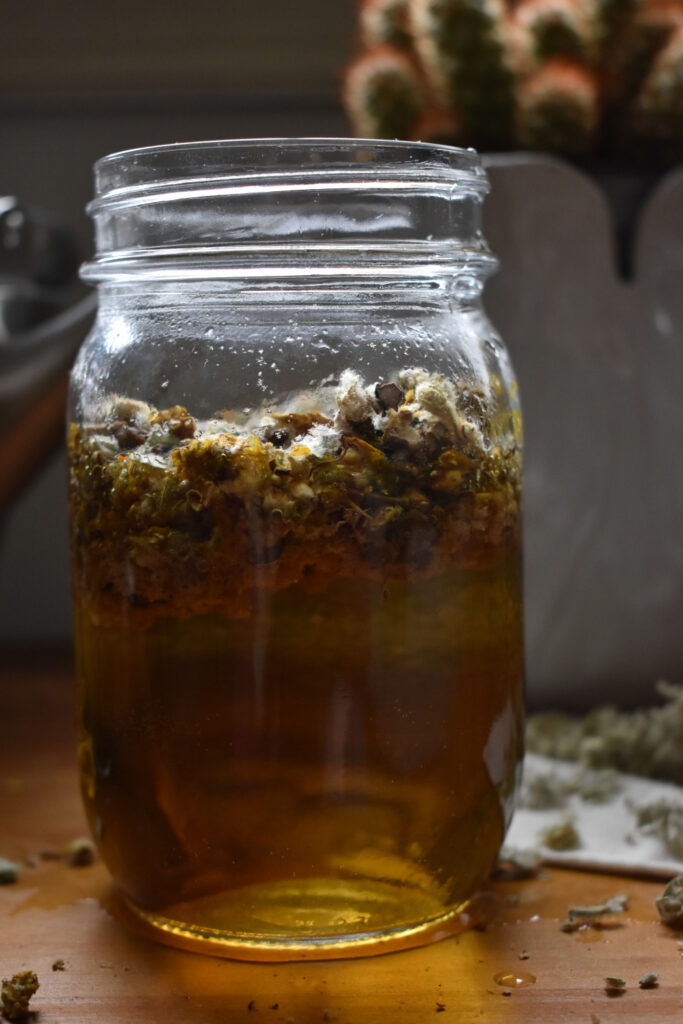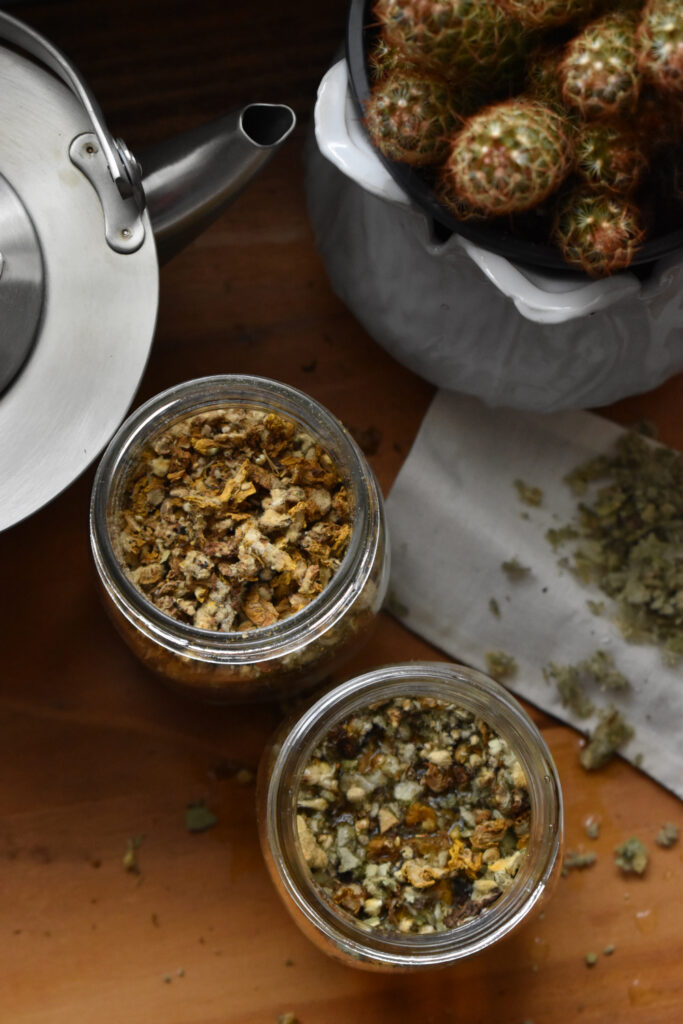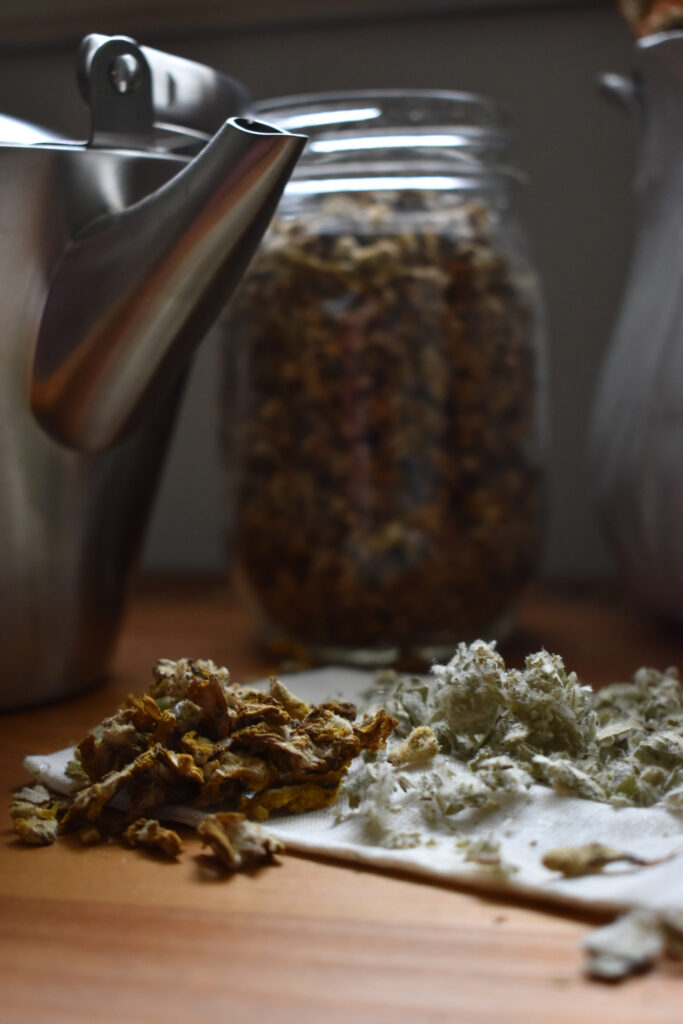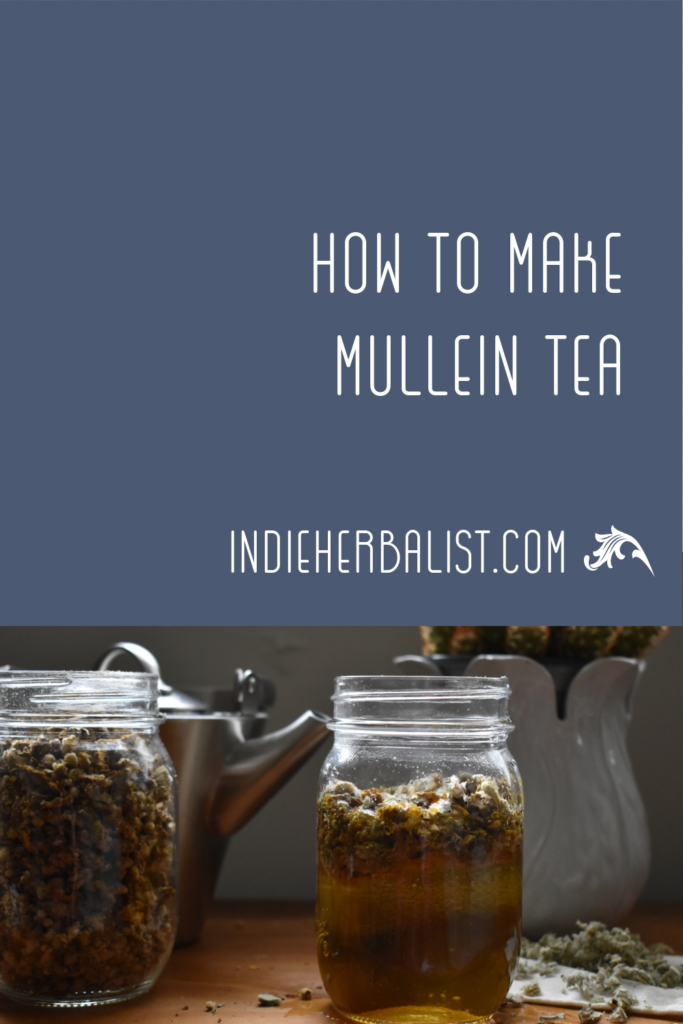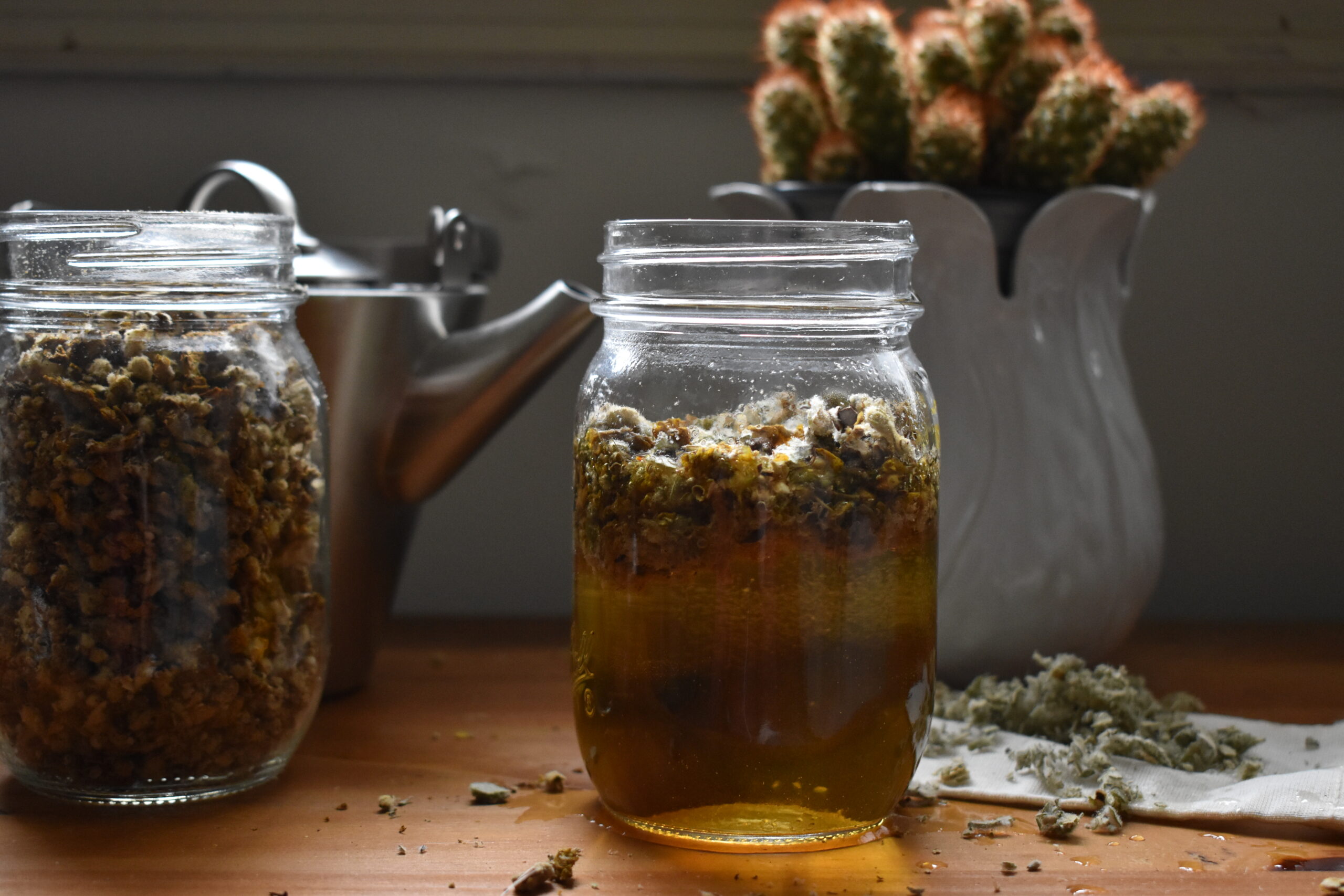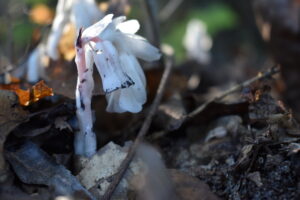Links contained in this post and elsewhere on my website may include affiliate links. When you make a purchase through these links, I earn a commission at no additional cost to you. I only link to products and services that I love - and that I think you will love, too!
Mullein leaf and flowers both make excellent herbal tea ingredients. In this article, I will show you how to make mullein tea, explain other herbs that pair well with mullein, and share links to other mullein tea recipes you can find here on Indie Herbalist.
When should you make mullein tea?
Traditionally, mullein is considered to have an affinity for the lungs and the lymphatic system. When the cold weather starts to set in and I feel my lungs getting heavy and grumpy, I like to reach for this herbal ally. According to herbalist Matthew Wood, it’s also helpful during times when a cough is dry and scratchy, as though the cough reflex is being overly sensitive. Environmental situations like wildfires, dusty conditions, and allergy season are also potential times when a cup of mullein tea can be comforting.
Mullein is a safe herb with few expected interactions. However, please check with your doctor before adding herbal teas to your wellness routines.
How to make mullein tea
Herbalists refer to mullein tea as an infusion. Infusions are stronger than normal beverage teas in order to maximize the beneficial aspects of the herbs used. For mullein, I prefer to use equal parts leaf and flower. Using only the leaves or only the flowers, or mixing it with other herbs that support immunity and respiratory health are also options.
Mullein is a relatively mild herb. You can use teaspoons or tablespoons to measure your tea ingredients, depending on how strong you would like the finished infusion to be. Mullein is covered in tiny, soft hairs, so filtering the final brew is important! Otherwise, it can make your mouth and throat feel tickly, which I don’t find particularly pleasant. Here’s my recipe.
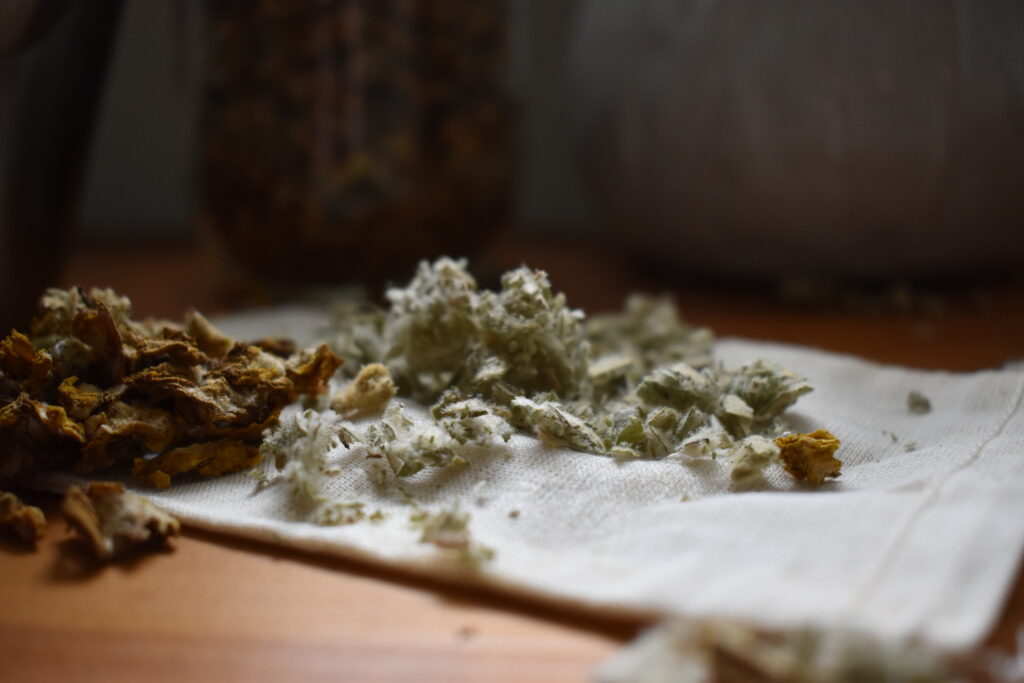
Ingredients
- 2 Tbsp dried mullein flower
- 2 Tbsp dried mullein leaf
- 16 oz hot water (fresh off the boil)
- Natural sweetener of choice
Tools needed
- Pint glass canning jar (16oz)
- Coffee mug or second pint glass canning jar.
- Mesh strainer
- Coffee filter
Directions
- Add 2 Tbsp dried mullein flower and 2 Tbsp dried mullein leaf into a clean, dry pint jar.
- Place the pint jar on a folded dish towel or pot holder on a heat-safe surface.
- Pour the 16oz of hot water over the mullein leaves and flowers in the jar.
- Cover the jar with a lid and allow to steep for at least 15 minutes.
- Place the mesh strainer over a coffee mug or second jar and use the coffee filter to line the strainer.
- When the jar with the infusion is at a safe temperature to handle, slowly pour the infusion into the filter until all of the infusion is in the mug or second jar. Your infusion is ready to enjoy!
Read on to discover how to enjoy your mullein tea and where to buy ingredients!
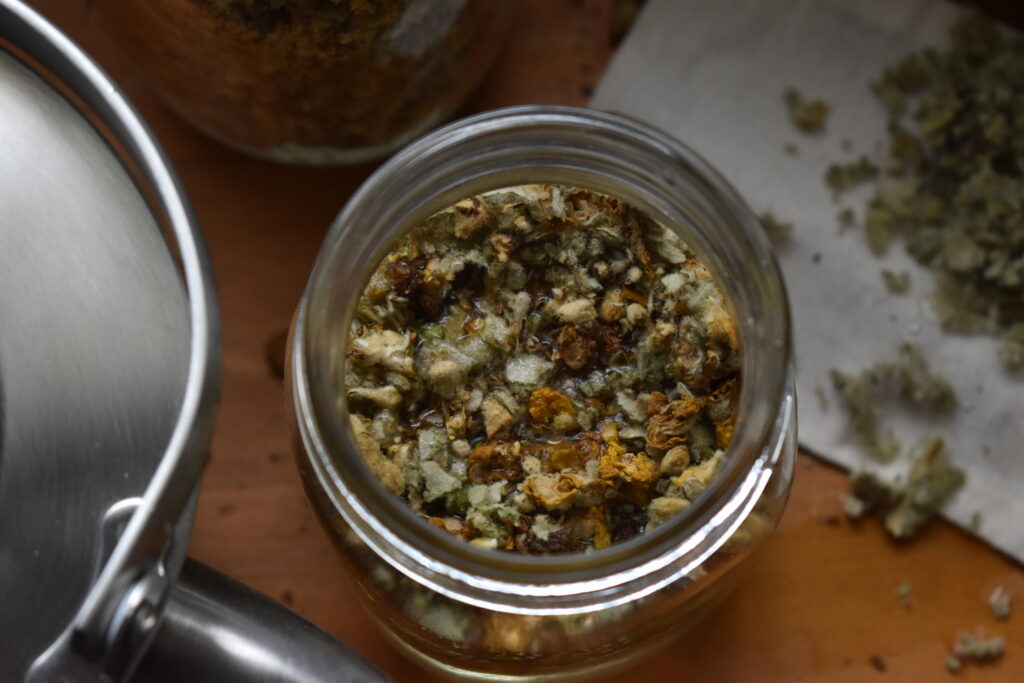
Enjoy your mullein tea
Sweeten your mullein tea with your preferred natural sweetener and sip on it as desired. The used leaves and flowers can be added to compost or sprinkled in the garden.
Also, remember that dried herbs are stronger than fresh herbs because fresh herbs contain a lot of water and moisture. Drying removes the water and concentrates the beneficial properties. So if you’re using fresh mullein you may need to double the amount of herb used.
Where to buy the ingredients
Mountain Rose Herbs (#affiliate) is one of my favorite sources for herbal ingredients. They carry a wide selection and because they specialize in herbs the quality is excellent. Be aware that their shipping may take quite some time, but I consider it worth the wait. Elk Mountain Herbs and Frontier are also good options. If you have a local herb farm, it’s great to support them if you can! Here are my affiliate links to Mountain Rose:
Other articles about mullein
Mullein is one of my favorite herbs. Its versatility and easy-going nature in the garden make it perfect for home herbalists. Here’s a roundup of other articles about mullein here on Indie Herbalist.
When to Harvest Mullein Flowers, Leaves, and Roots
